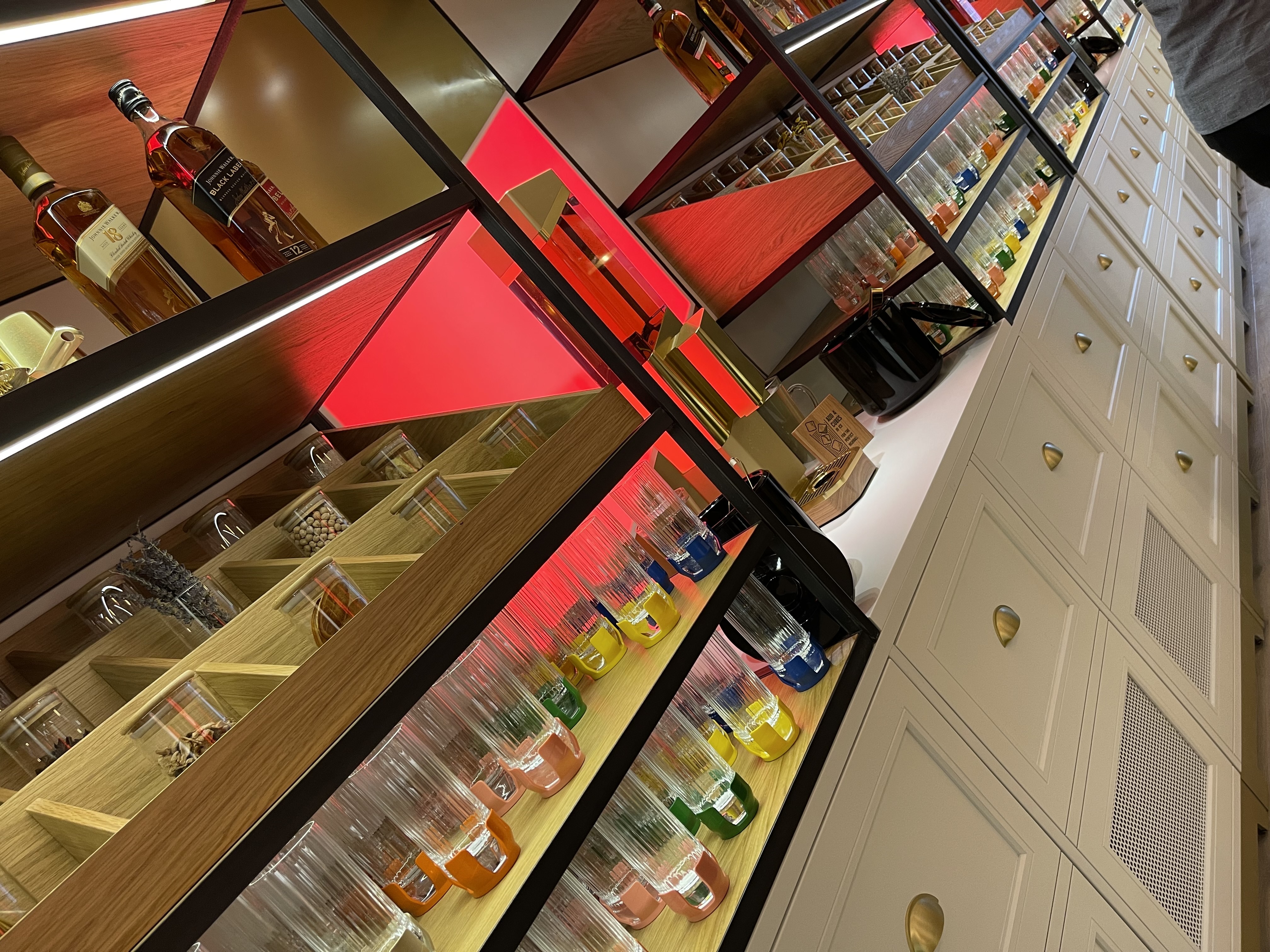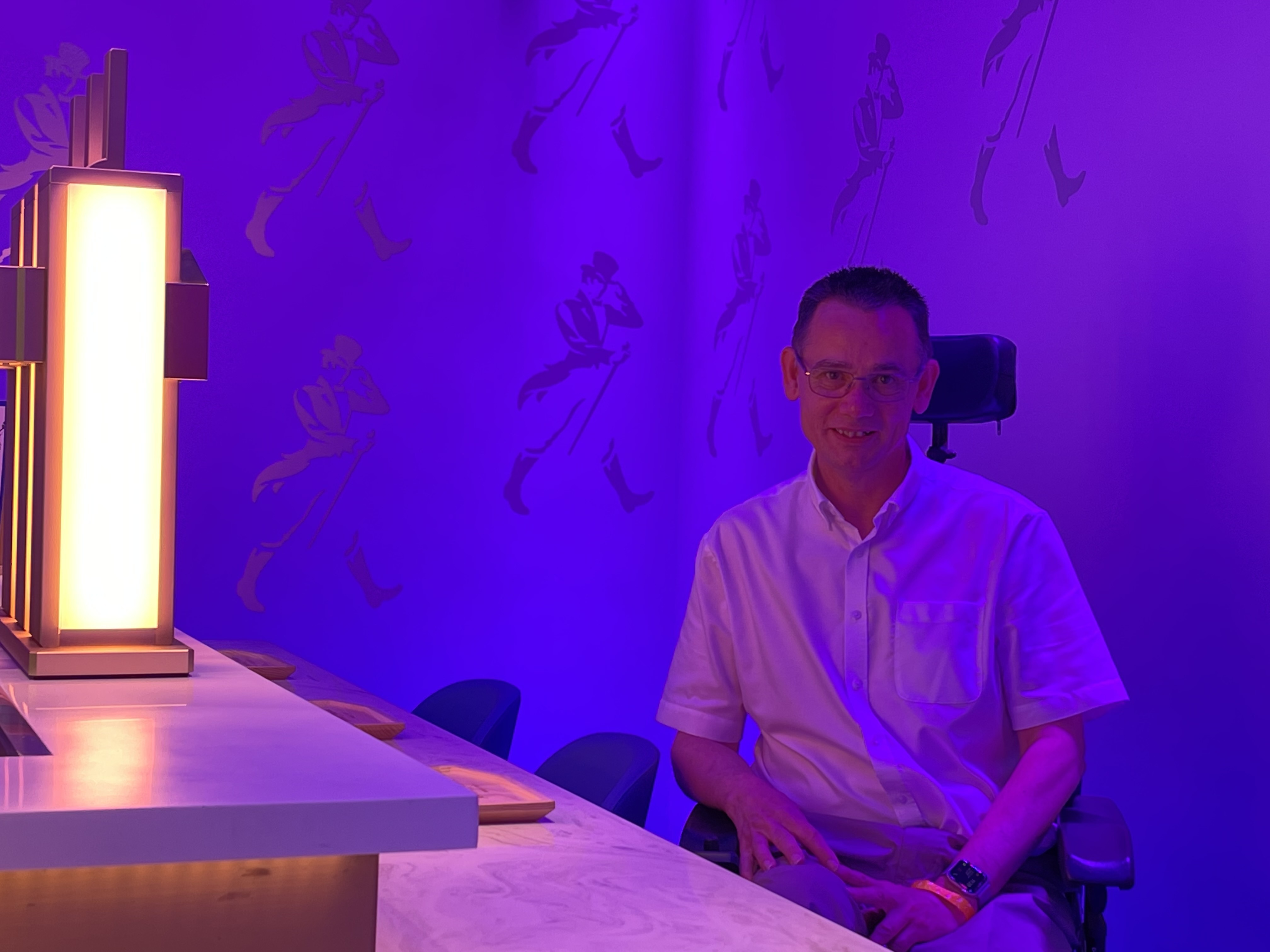Accessibility at Johnnie Walker Princes Street

From the very earliest stages of planning, Diageo’s aim was to take everyone on the journey, to make Johnnie Walker Princes Street an experience that was truly accessible for all. To do so, the team has worked hand in hand with a charity which, since its foundation in 2013, has made it its mission to give disabled people the freedom to explore. Founded by powerchair user Euan MacDonald MBE and his sister Kiki, after he was diagnosed with Motor Neurone Disease, Euan’s Guide has broken down the barriers of exclusion.
Through its website EuansGuide.com the charity makes it easier for disabled people to find great places to go, providing an access review platform where disabled people, their families, friends, and carers can find and share reviews on the accessibility of venues around the UK and beyond.
Johnnie Walker Princes Street opened its doors to the public on 6th September in Edinburgh and this inclusion featured in a Diageo press pack ahead of the venue opening.
At Johnnie Walker Princes Street, Euan’s Guide has been actively involved in planning from the outset, meeting with the architects and design team and offering input and guidance at every stage. The result, as Access and Inclusion Director at Euan's Guide, Paul Ralph, explains, is a venue and experience which breaks new ground in Scotland.
How has Euan’s Guide worked with Diageo on Johnnie Walker Princes Street?
We joined at the beginning of the project journey and started our engagement by meeting the architects and reviewing the plans. We have a habit of asking lots of questions and working with people, so they understand what the issues and problems are before they start thinking about a list of tools, appliances, systems, and services they plan to build and install. Simply, it is about helping people understand the lived experience as a disabled visitor to a tourist attraction. It is also about empowering teams to avoid trying to fit people into categories or boxes. Instead, reaching out and welcoming everyone and asking if there is anything they can do to make a visit easier. It is about getting people to understand that just because access can be difficult in older sites it doesn’t mean you cannot create experiences.
We have worked with the design team and “experience creators” to help them understand that not everything is about wheelchairs and visually impaired people. After all, the majority of disabled people wouldn’t describe themselves as either of these. It is about considering those visitors who may not read, may have cognitive impairments, may need super accessible toilets, may like captions, could enjoy sensory stimulation and who have hidden impairments.

Photo of: A staff member at Johnnie Walker Princes Street with "Need Assistance, just ask me" on the screen.
How common is it for organisations to engage with you like this on projects of this scale, from the very outset?
Simply put, it doesn’t happen! Very few projects work in the way Diageo has to embed disabled people in the project team. The norm tends to be that an advisory group is formed to look at what has been built, implemented and setup. Often, and more usually, this is in a reflective way. This doesn’t leave any scope for properly considering what disabled visitors actually want to see. There is a major disconnect between what venues think disabled visitors want or prioritise versus what disabled people tell us they want or need.
Does this kind of approach matter to the people who rely on Euan’s Guide for advice, information, and support?
It is tremendously important for our readers to read and follow the stories and experiences of other disabled people visiting places. If I read a review from another powerchair user, then I have high levels confidence in visiting myself. If my pal, who is blind, reads a review from someone else who is visually impaired then he has more confidence in making a visit too. Where an organisation talks to us, works with us, and is willing to learn from us, share their experiences with us, it becomes a win-win situation. After all, we don’t know much about whisky production, but we do know what a good welcome feels like. That’s how I describe inclusion. Places can be very accessible but not inclusive and it is those feelings that remain with me. I may not remember exactly what I did but I do remember what things felt like. Parking me in a corner to wait whilst my pals go on a tour, ignoring me when I arrive, or creating exhibits I can’t interact with all leave me with a feeling of disappointment. Where an organisation creates something for everyone it feels so different. When you reach a point where you can turn up, regardless of impairment or condition, and for a brief moment in life you are able to forget that and enjoy the simple pleasures like everyone else you know that is an inclusive and accessible setting.
What are some of the most exciting / innovative features that people will see, in terms of how the site has been made accessible?
I am somewhat biased and have to say the provision of a Changing Places Toilet says everything I need to know about the offering. Where an attraction, or business, offers a Changing Places Toilet you instantly know: here is an organisation committed to accessibility and a team that welcomes everyone. There are more public toilets in Wembley Stadium than there are Changing Places Toilets across the UK. In the context of Edinburgh, there are currently only ten Changing Places Toilets and most of these are in the suburbs. Having a Changing Places in the west end of the city is simply a gamechanger. It is the difference between being able to make a visit or not for the 250,000 people, and their families, who depend on these facilities. In terms of innovation, I would say the very fact you can forget about access and simply enjoy your visit is testament to the features and facilities for disabled visitors.

Photo of: The bar at Johnnie Walker Princes Street with bottles and glasses.
Does the way this project has been approached send a message from Scotland to the wider world?
Absolutely. Where a tourist attraction embraces accessibility and what is effectively good customer service they will thrive. Who wouldn’t want a share of the £1.3 billion annual spend of tourists on accessible tourism in Scotland? Treating accessibility and inclusion as a business opportunity and not a compliance exercise leads to disabled people engaging more with your offering. Typically, staying longer, spending more, telling more people, and returning more often.
And how are you looking forward to the opening? What do you think it will add, in terms of attractions, for Scotland and Edinburgh?
The opening of the Johnnie Walker Experience is a great opportunity to showcase the whisky story but also to showcase what good access and inclusion looks like. To demonstrate that it needn’t be complex, expensive, or difficult either. Hopefully, it puts Edinburgh firmly on the accessibility map and through the activities and influence of the experience helps to make Scotland a more inclusive place to visit, to work and to enjoy.

Photo of: Paul Ralph, Access and Inclusion Director at Euan's Guide, at Johnnie Walker Princes Street.


 Follow Euan's Guide on Instagram
Follow Euan's Guide on Instagram
 Follow Euan's Guide on LinkedIn
Follow Euan's Guide on LinkedIn
 Follow Euan's Guide on Facebook
Follow Euan's Guide on Facebook


Comments
You have to be signed in to leave a comment.
Login / Signup